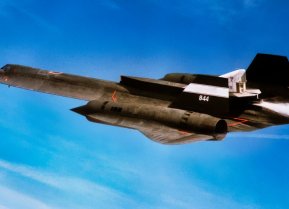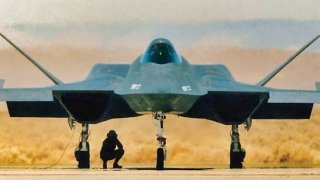The F-19 Fighter Never Was: But a Model Kit Still Worried Lawmakers
In the 1980s, Testor released a model kit of the "F-19 Stealth Fighter," a fictional aircraft that caused a stir among lawmakers and the public.
The Stealth Fighter That Never Went in the Air: In the 1980s, Testor released a model kit of the "F-19 Stealth Fighter," a fictional aircraft that caused a stir among lawmakers and the public.
Rumors: Despite never actually existing, the model's release coincided with reports of a secretive U.S. stealth aircraft program, leading to speculation and concern.
What Never Was?: The model kit became a massive hit, selling nearly 700,000 units after an unidentified aircraft crash fueled rumors. The F-19 was purely a product of guesswork, loosely based on the Lockheed SR-71 Blackbird, and has since become a legendary piece of aviation and pop culture history.
The F-19 Stealth Fighter: The Top-Selling Model of a Plane That Never Existed
Scroll through some aircraft modeling forums and chances are you might find a discussion of the "F-19 Stealth Fighter." There are claims it was one of the top-selling model kits; if the rumors are to be believed. The kit can still be found for sale on eBay and other marketplaces.
Yet, while the model existed, the aircraft didn't. There never was an F-19 Stealth Fighter. Still, the release of the F-19 Stealth Fighter as a scale model back when the Cold War was still very much ongoing was enough to cause concern from lawmakers back in the 1980s.
Jack Rossen writing for Mental Floss explained that in 1986 Rep. Ronald Lee Wyden (D-Oregeon) got wind of a model kit released by Testor – one of several companies that produced scale models of military aircraft that at times employed blueprints, photos, and as much detail as possible. Though such model kits normally wouldn't be seen as a national security threat, the fact a state-of-the-art jet not known to exist was being produced in model form clearly rattled the congressman.
Wyden brought "his findings" to the House Energy and Commerce Oversight and Investigations Committee – which was basically a news story that the Associated Press picked up from an Ohio newspaper.
"You can't see it," reporter Tim Gaffney wrote for the Dayton Daily News. "The Air Force won't talk about it. News reports about it have been sketchy and unconfirmed over the past several years. But if you want to build a plastic model of the super-secret stealth fighter, just place your order with the Testor Corp."
Though it wasn't meant to be hyperbole, the lawmaker saw Gaffney's report as quite serious, apparently missing the part that model kit companies also produced science-fiction spacecraft and UFOs. Perhaps the fact that the box proclaimed "top secret" was the issue!
"What I, as a member of Congress, am not even allowed to see is now ending up in model packages," Wyden told the other lawmakers.
"Has our national security been compromised," Wyden asked very seriously. "The fact is, we don't know. We don't know who's got those documents, the Soviets, terrorists, model companies, who knows. That's the danger."
The House lawmaker reportedly even asked the chairman of Lockheed why an aircraft that members of Congress couldn't see was being sold as a model kit!
There Was No F-19
The question on Wyden's mind was how Testor's model designers knew about the seemingly top-secret F-19 Stealth Fighter? It should be noted that the model maker's rivals including Revell, Monogram, and Italeri, all eventually produced F-19 kits as well. Was there a vast conspiracy at play?
"All of (the model maker companies) claimed that their models originated from a kit based on photos of an existing aircraft taken around Area 51," TheAviationGeekClub.com reported in its coverage of this mystery. "The manufacturers had decades of experience in producing highly detailed models that pilots and aerospace engineers purchased. The CBS Evening News with Dan Rather and other media discussed the models after they hit market in the mid eighties; when the real stealth aircraft crashed in California in July 1986, news stories used the model to depict it."
And this is where the story gets a bit more interesting.
The model kit had been released months earlier, but when an unidentified test aircraft did crash in California's Kern River Canyon, there was speculation it was an F-19. Since images of the crash site couldn't be taken, some media outlets used the Testor box art instead!
And that led to it becoming the bestselling model aircraft in history.
As the Mental Floss report noted, the F-19 wasn't expected to be the hit model kit of the year, as the company was rolling out its F-14 Tomcat in advance of the Tom Cruise film Top Gun. Once the crash occurred and the story gained steam that the government was recalling the kit – not true btw – sales went through the roof. While model kits might see around 30,000 units sold annually, the F-19 kit reached nearly 700,000, making it the top selling model airplane to date, dethroning the Star Trek USS Enterprise.
It wasn't likely that any secrets would have been revealed from the model kit, however.
According to Modeling Madness, which reviews vintage model kits, "The F-19 kit is a fairly simple kit compared to the ones today as it consists of 62 black parts and 4 clear parts. The detail is pure 1980s with plenty of ejection pin marks on the insides of the doors and somewhat thick small parts."
Yet, the successful sales were enough that other model companies soon jumped on the bandwagon producing their own versions of the F-19 Stealth Fighter.
So What Was?
The Testor model kit was really just a case of guesswork. It wasn't based on stolen data or top-secret photos. Its kit was loosely based on the Lockheed SR-71 Blackbird.
"Testors stuck a pair of standard-issue vertical stabilizers on its 1/48-scale model and packaged it up, Smithsonian Magazine suggested in its reporting on the F-19 mystery.
It is unclear if Tom Clancy's novel Red Storm Rising, which came out in 1986, had anything to do with the name employed by Testor. In the novel, the U.S. Air Force operates a two-seat stealth fighter that was named the F-19 Ghostrider.
Two years after the initial hubbub, the U.S. Air Force declassified the Lockheed F-117 Nighthawk, which aviation watchers had tried to get a glimpse of in test flights. The model kit wasn't remotely close to the actual stealth fighter – apart from both having a flat underside.
Its legacy lived on as video game developer MicroProse released two games – Project Stealth Fighter and F-19 Stealth Fighter – that used artwork based on the Testor model kit, while an F-19 was part of the G.I. Joe: A Real American Hero toy line with a figure pilot named Ghostrider.
For its part, Testor followed up with a MiG-37B stealth fighter, released in 1987, but apparently, no one in the Kremlin even noticed.
Author Experience and Expertise: Peter Suciu
Peter Suciu is a Michigan-based writer. He has contributed to more than four dozen magazines, newspapers, and websites with over 3,200 published pieces over a twenty-year career in journalism. He regularly writes about military hardware, firearms history, cybersecurity, politics, and international affairs. Peter is also a Contributing Writer for Forbes and Clearance Jobs. You can follow him on Twitter: @PeterSuciu. You can email the author: [email protected].
All images are Creative Commons.


